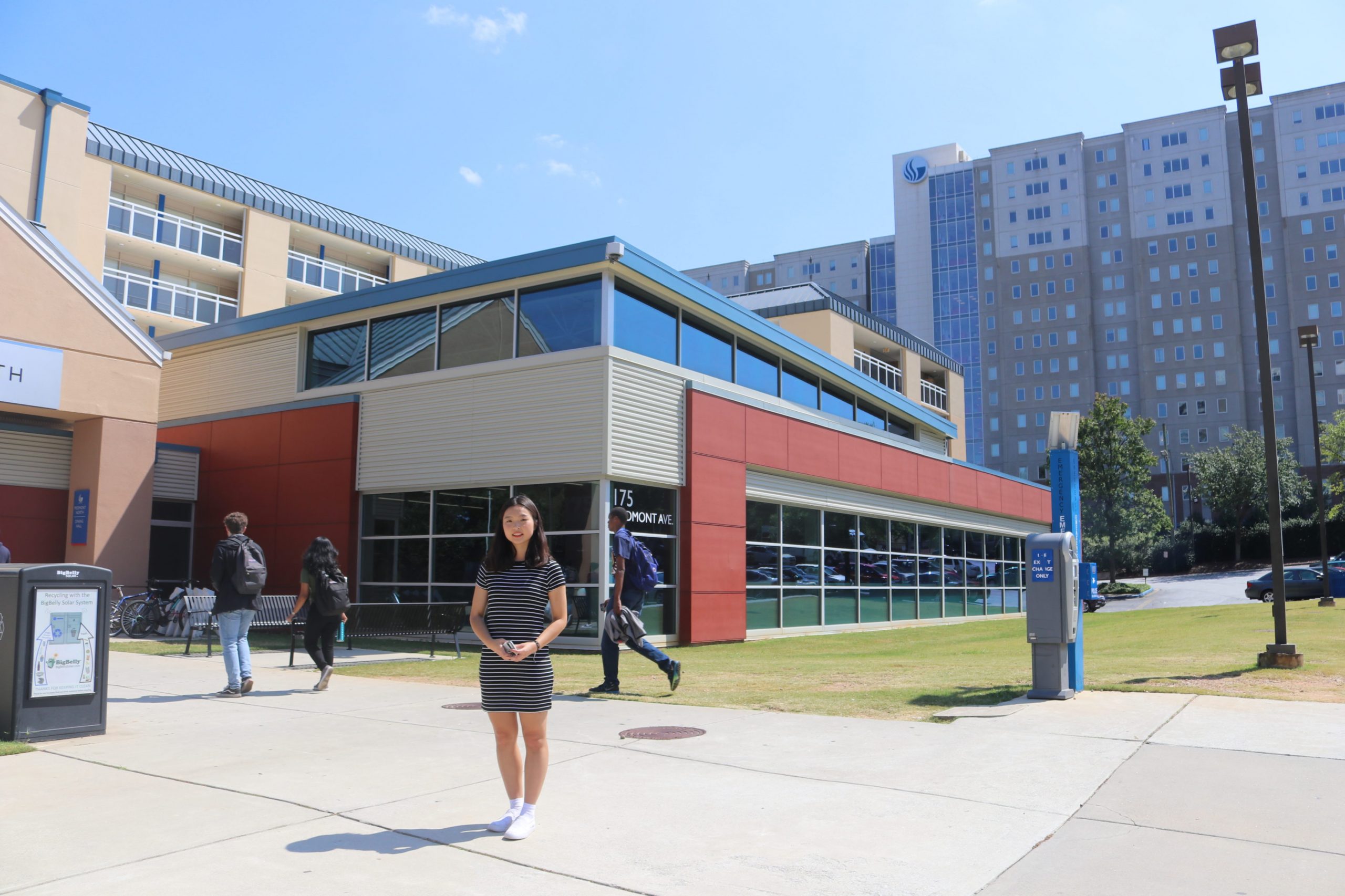
Universities have often used the construction of grand, new facilities to attract potential students to attend their schools, but this trend has been steadily shifting to simpler housing.
A study by Sightlines stated that 2015 saw the lowest amount of space made available for new student dorms and student services facilities since 2000. Only 6.6 million square feet of land was dedicated to the construction dorms and student services in 2015 as compared to the 11 million square feet in 2004.
However, colleges haven’t entirely stopped using new buildings to draw in students. In fact, in 2007 Georgia State spent $168 million on the construction of the University Commons, the most expensive student-housing project in the U.S.
With rising student tuition, rather than blowing budgets on lavish housing facilities, Thomas Carlson-Reddig, Partner and Community Global Practice Leader for the architectural firm Little, said traditional styles of housing – smaller, shared rooms – have come back full circle with colleges.
“The rising cost of education has been a topic that has been discussed quite a bit,” Carlson-Reddig said. “Some folks are looking at it seriously and looking at ways to address it and one way is to build more simply.”
Carlson-Reddig pointed out that simpler designs are not necessarily inadequate designs and that using simpler templates make housing more affordable for students.
“If you look at people that attending higher education, a very high percentage of them come from middle class or lower-middle class backgrounds,” Carlson-Reddig said. ”They can’t afford luxury housing, they’re looking for options. Universities and colleges are trying to offer options to address their increasing costs of education.”
Georgia State attempted this with its fairly small Patton Hall. The housing facility holds 325 resident students with suites that can accommodate up to three students. One bedroom per suite is a double occupancy room, with one bedroom being a single occupancy room. Unlike the Commons, dorms in Patton Hall lack kitchens and living rooms.
Georgia State’s Vice President of Finance and Administration Jerry Rackliffe said Patton Hall’s simpler design was built as a cost effective option for student housing.
“Patton Hall was to provide students with the opportunity to secure a bed and meal plan for the same price as a bedroom and a kitchen in the Commons,” Rackliffe said.
Both Piedmont North and Piedmont Central were built with the same basic design as Patton Hall. Journalism major Gawon Bae lived at Piedmont North during her freshman year and has been living at the Commons for the past two years.
“I actually liked Piedmont North,” Bae said. “I had a room for three so I had to share a pretty small room with two roommates who I didn’t know at that time when I moved in, but because Piedmont North requires a meal plan, I got to meet and make friends at the dining hall.”
Bae said that the housing at Piedmont North was cheaper compared to the Commons but due to the fact that the meal plan was mandatory, the price for Piedmont North rooms are slightly raised.
“The Piedmont North room itself was around $1,800 and the [seven day] meal plan was $1,600 and the Commons right now is $4,000,” Bae said. “Piedmont North’s cheaper, even with the meal plan to be honest.”
Bae said the biggest problem with the Commons as of late has been the overflow of student residents on campus. At the beginning of the fall semester, Georgia State overbooked students to live in campus housing.
According to Georgia State, 500 of the 5,300 residential students were affected by the overbooking. The school anticipated that the higher-than-usual housing applications would be balanced out by cancelations, but by the start of the fall semester, 400 students had to stay at the Sheraton Hotel in Atlanta from Aug. 21 to Aug. 31.
Students living at the Commons were asked to share their rooms with the remaining 100 overflow residents voluntarily; those who did would receive a $1,400 room reduction rate for the semester. According to University Housing Director Randy Brown, the university is making moves to correct the issue.
“All students who were residing in the Sheraton were provided a bed in University Housing as of August 31,” Brown said. “All housing residents have their own housing assignment and we are being diligent with processing cancellations daily so that we can reassign students currently in overflow rooms. We are encouraging any student who needs assistance to come by the University Housing office.”
Brown said that a total of 50 students at the Commons are currently sharing their rooms with overflow residents.
